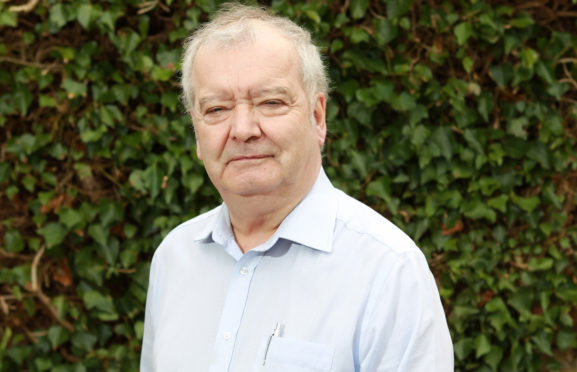
The world’s leaders must take inspiration from the great Allied leaders of the Second World War in creating a post-coronavirus world, according to Scotland’s leading historian.
Sir Tom Devine said the 75th anniversary of VE Day on Friday was a reminder of the international co-operation that followed the end of the conflict and, as importantly, the calibre of the world’s then leaders.
Sir Tom, professor emeritus at the University of Edinburgh, said similar leadership and the same pooling of resource and expertise will be crucial in rebuilding the world’s economy after the Covid-19 pandemic. He said: “The Second World War is very much part of the national consciousness. It gave rise to one of the great national myths of Britain standing alone against the greatest evil the world has ever seen. The view after 1945 was that there would have to be a better world and nothing like the catastrophe of World War Two could ever happen again. This was the basis for the foundation of the United Nations, that there would be an international force for good and hopefully the elimination of conflict.
“At the same time, the only nation left in a formidable economic position was the USA, who shortly after the war produced the Marshall Plan to provide massive resources to start the European economy.”
Sir Tom said that, although the coronavirus was unlikely to claim a similar number of lives as the Second World War, the leadership shown in reconstructing the world after the war was needed again. He said: “The world is going to start to move on from controlling the virus to dealing with the economic crisis. For this we are going to need statesmen and stateswomen of the calibre that the USA, Russia and Britain had in 1945. The period of reconstruction after World War Two demonstrated that there has to be international interaction.
“But it is also clear from the evidence of 1945 and after that there has be a high quality of statesmanship, that the people in government who are going to be pulling the levers of power have to be of first-class quality, but I will leave it to your readers to determine whether that is the case at the moment.”
Sir Tom also warned against a return to an age of austerity after the pandemic: “The government, which is ideologically driven in a right-wing direction, has had to intervene almost like a socialist state because of the crisis. My concern is that at the end of this, because of the economic difficulties that will ensue to repay what the state has paid out, there might be a return to austerity.
“The future is not my period of expertise, but my own sense is if there is an attempt to rigorously impose austerity again, there could be social unrest in this country.”

Enjoy the convenience of having The Sunday Post delivered as a digital ePaper straight to your smartphone, tablet or computer.
Subscribe for only £5.49 a month and enjoy all the benefits of the printed paper as a digital replica.
Subscribe